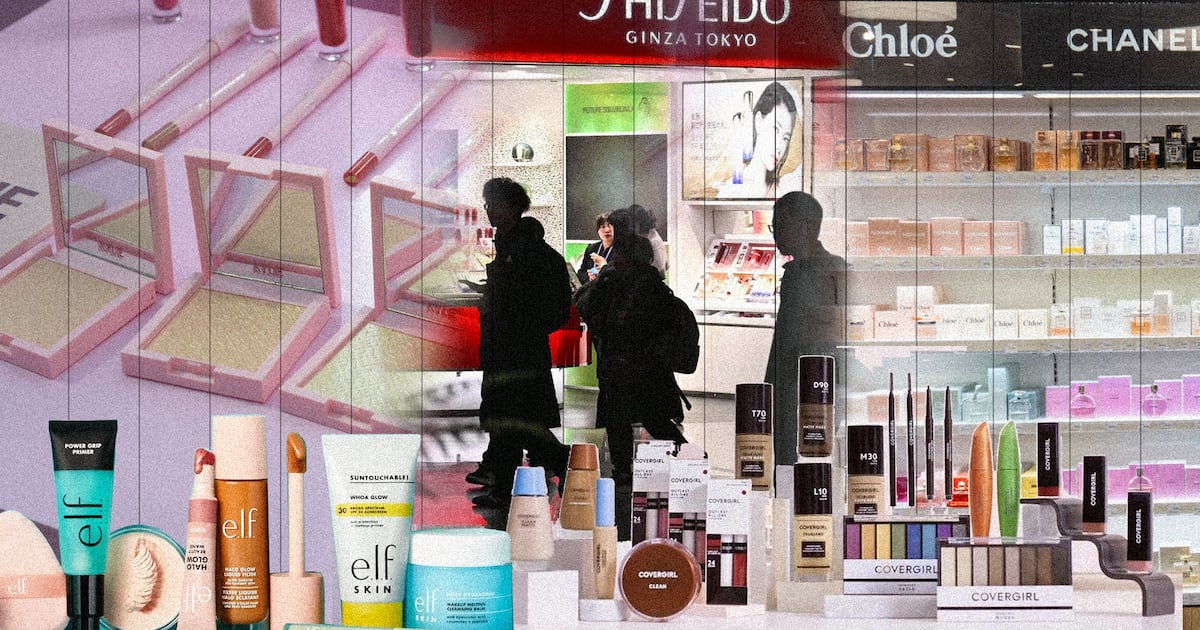
Beautyâs recession-proof shine is wearing off.
This quarterâs batch of earnings saw lacklustre performance from almost every major beauty company. Coty reported a 6 percent sales decline, cut its annual profit forecast and announced plans to lay off around 700 employees, around 5 percent of its workforce. Both LVMHâs selective retailing, which houses Sephora, and its perfumes and cosmetics division, failed to grow. Beautyâs biggest firm, LâOréal, posted modest growth of 3.5 percent in the first quarter, a climbdown from double-digit gains it often reported in recent years. Ailing conglomerates like Estée Lauder Companies and Shiseido also saw their sales continue to slide.
Beauty has long been considered one of the most resilient discretionary categories, a belief that is tied to the âlipstick index,â an expression coined by second-generation company leader Leonard Lauder in the wake of the 2008 global financial crisis. The theory was that in times of economic strife, people turn to small luxuries, such as lipstick, to boost their moods.
Post pandemic, that was certainly true: Beauty categories like skincare saw enormous growth, both in consumption and venture capital funding â in 2021, more than $1.5 billion was invested in beauty companies, according to capital market insights firm Pitchbook, some $600 million more than was invested in 2019.
In earning calls, executives blame the current slump on retailer destocking, economic uncertainty and the looming threat of tariffs. Theyâre not wrong. But the wider issue is that we are entering, as TD Cowen analyst Oliver Chen puts it, an era of âcustomised moderation,â wherein shoppers are becoming choosier with their dollars.
The difference now versus when the âlipstick effectâ was coined is that brands more frequently push their priciest products, rather than cheaper impulse buys. And the sheer amount of choice has left many customers feeling ambivalent about beauty overall. At the same time, they are feeling pressured by several years of high inflation and sluggish economic growth. This means they have less money to splurge, and when they do, beauty may not be the first place they go to shop.
Beauty, other words, isnât an essential purchase after all, said Chen.
âItâs not like food… you donât need cosmetics,â he said.
Counting the Pennies
Many beauty brands rely on middle-class, aspirational shoppers as a primary customer base â and now, many are pulling back. Retail sales in the US fell 0.1 percent in April against the previous month.
One example of how this plays out in real life: Hairstylists across the country report that customers are switching to lower-maintenance styles, like ârecession blondeâ highlights, which are less expensive to maintain.
Value-seeking behaviour doesnât mean a total stop to beauty purchasing, or even fewer trips to Sephora. But it does mean consumers become more attuned to deals, discounts and promotions. Chen noted the rise of TikTok Shop and Amazon as bona fide beauty retailers is pressuring traditional, full-price retailers: On Nordstromâs website, a 70ml bottle of Chloé perfume is $162; some Amazon sellers have listed as low as $72.
Itâs also chic to look for value today, said Chen, creating an opportunity for discounters. When polled by TD Cowen between November 2024 and February 2025, 36 percent of women earning between $100,000 and $149,000 annually had shopped for beauty products at an off-price retailer in the last 30 days.
Spoilt for Choice
Some of the very factors that propelled beautyâs growth for so long, like a surge in new indie brands, the proliferation of e-commerce and explosion of TikTok, are now causing fragmentation and fatigue.
Movements like the âunderconsumption coreâ trend on TikTok, where users shared their bare-bones beauty routines was an early indicator that shoppers when it first surfaced last summer. It showed that even Gen-Z was feeling overfaced by the sheer amount of products being marketed to them.
Even for companies that are savvy with digital marketing can end up competing not just with their peers, but with the wider culture and news events, for consumersâ attention. E.l.f Beautyâs chief executive said in April that its social conversion took a hit when shoppers became distracted by headlines such as the possibility of a TikTok ban.
âTheir business model is a little more susceptible to exogenous noise,â said Jon Anderson, an analyst at investment firm William Blair. âA lot of other things in the world are sucking up oxygen on social media.â
Beauty is a category with strong emotional ties, especially for brands who cater to issues like acne or hair loss, or have a clear aesthetic and formulation proposition. Chen said he expected the slowdown to continue well into the summer, at least until some difficult comparison bases against last year eased off, but that going forward, innovation and individuality matter more.
âValue does not mean lower prices [always]… it means investing in your product,â Chen said.
Sign up to The Business of Beauty newsletter, your complimentary, must-read source for the dayâs most important beauty and wellness news and analysis.

